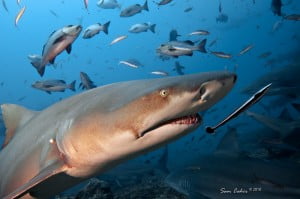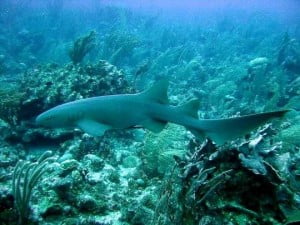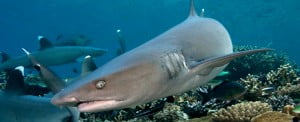A large elongated shark that can reach lengths of up to 3 meters, Sicklefin Lemons are identified by their tan color (hence the name), two rather large and nearly equal sickle-shaped dorsal fins, sickle-shaped pectoral fins, small eyes and a distinctive black spot on the tip of their snout. On Shark Reef, they are frequently confused with the Tawny Nurse Sharks from which they however differ by their continuously open, tooth-studded mouth and by having a proper “sharky” tail.
Like the Silvertips with whom they share an undeserved bad reputation, Lemons appear completely unfazed by divers which they will approach closely.
The best time to encounter Lemon Sharks is between October and December in Fiji.More info here…



















